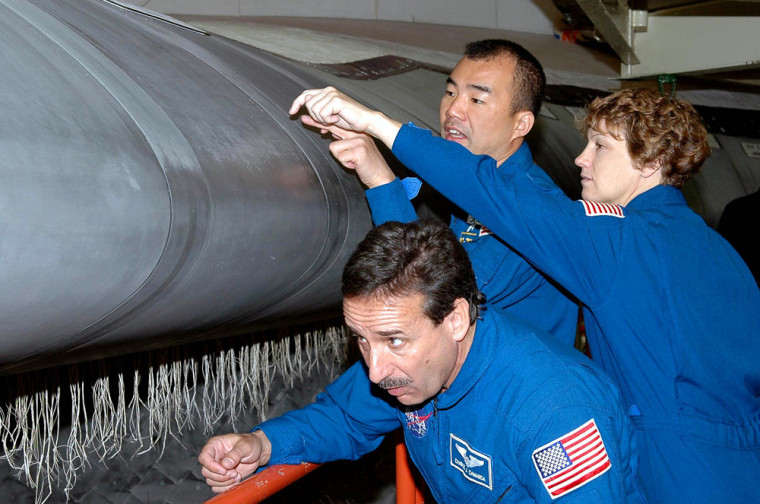As NASA and its industrial army march forward to the space shuttle program's return to flight, a new assessment has been made on the program’s overall price tag to the taxpayer.
The data show that over the entire lifetime of the the space shuttle program the cost has been $145 billion, and about $112 billion since the program became operational.
Furthermore, the average cost per flight has been about $1.3 billion over the life of the program and about $750 million over its most recent five years of operations.
Updated shuttle stats
This tale of the tally comes from Roger Pielke Jr., director of the Center for Science and Technology Policy Research here at the University of Colorado. The updated shuttle stats build upon research he published in 1994, as well as drawing from the work of the Columbia Accident Investigation Board. Also reviewed in the appraisal is the new NASA budget request for fiscal year 2006 that outlines expected shuttle costs — in 2004 dollars — through 2010.
Because NASA has costs for the shuttle program that are not reflected in its budget line, Pielke said it is appropriate to add 10 percent to these totals and also to adjust those expenses to common year dollars.
Given that fine-tuning, if the space shuttle program is terminated after 2010, then it will have a total lifetime cost of about $173 billion, Pielke reported.
Pielke pointed out that if the shuttle program averages four flights per year upon a return to flight, then the NASA space plane will fly an additional 22 times, for a total of 134 flights over its lifetime.
Given that flight rate, this will result in a total program cost per flight of $1.3 billion, Pielke explained. Of further interest is the average cost per flight from 2004 to 2010: It is $1.3 billion. The average cost per flight from the middle of 2005 through 2010, assuming 22 flights, is about $1.0 billion, he said.
Performance versus promise
All of these numbers fall squarely within the range that Pielke and space policy associate, Radford Byerly Jr., projected in a early 1990s paper on the performance of the space shuttle program through 2010: “The Space Shuttle Program: Performance Versus Promise” — a chapter in the book “Space Policy Alternatives,” published by Westview Press in 1992.
Putting his calculator and shuttle spread sheets aside, Pielke said the new research brings up several points.
First of all, space policy analysts have had a pretty good handle on the policy and political dynamics, including costs, of the shuttle program for some time now. “The shuttle program has been through its life plagued by promises of costs and performance that have been overly optimistic. We should know better by now,” Pielke told Space.com.
Pielke said that the shuttle program “has been and will continue” to be expensive. “We should open up debate and discussion on the future space program to a wide range of alternatives, and include many voices beyond NASA and the traditional space flight community. There is strength in such diversity.”
What’s ahead?
Looking to the past 30 years provides a unique perspective on the next three decades, Pielke advised, that is, if there is an assumption that human spaceflight is supported in the future as it has been in the past.
“There is no reason to expect that public support will diminish,” Pielke concluded. If that’s the case, then what might be the best use of $150 billion to $200 billion in a space program?
“Above all, we should make sure that promises and commitments of performance are realistic and achievable. The history of the shuttle and the international space station gives us a lot to learn from,” Pielke stated. “One is not to plan for big future budget increases as the basis for future successes.”
